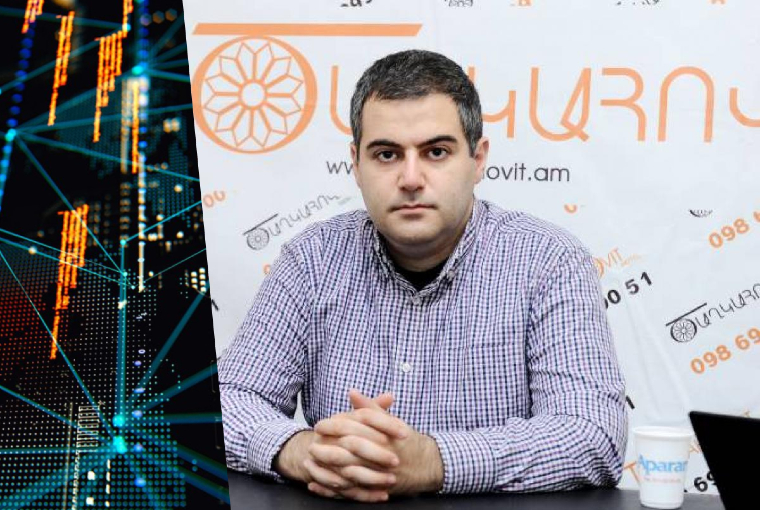
Hrant Mikaelyan is an economist and works at the Caucasus Institute. He is engaged in demographic research. On his own initiative, he began to study the possible risks, calculations and analyzes that have not been done since the coronavirus infection entered the country.
He works exclusively with state statistics, simulates it in different formats. He focuses on the dynamics of the spread of the virus, the number of deaths due to it.
The number alone is not enough to assess the situation, according to him, it is necessary to understand what that number represents. For example, he compares the statistics of May 26 with the digital data of April, as a result of which he gets 1 positive result for April from 20 tests, and in May – 1 positive result from 3 tests. This comparison helps to understand the extent to which the volume of tests reflects the prevalence of the infection.
He says that in the media, there is almost no analysis or research based on statistics, except for the numbers from the source.
Why, because the language of data and graphs is not clear to people?
More because the media have no experience working with data. Data analysis is very important to understand not only the current situation but also what is expected.
The same numbers can be analyzed a thousand and one ways, and special specialists are needed for that. Story writers, who are now the most popular in the Armenian media, cannot do this. It would not be right to say that there is no demand, people should be gradually taught numerical analysis.
There are several media outlets that try and aren’t that bad. There is really progress compared to ten years ago.
The problem is that our society has not believed in numbers since the Soviet era, and does not understand digital analysis.
And people find themselves in parallel information realities. In order to adequately perceive the situation, data and graphs, visual materials are very important.
But confusing people with data is a common media ploy.
If the consumer is accustomed to reading numbers and understanding them, it is not so easy to mislead him. Even authoritative international media often allow such a slip, sometimes consciously, sometimes unconsciously.
The topic of the new coronavirus is mainly in the form of data in the media, so there is a lot of misinformation.
But in order to draw a person out of the information reality, it is possible to talk to him with data, analyzing them, even with simple visual formations. Editors can have a large audience if they can visualize the topic and have a separate employee or team.
Data analysis may not be clear to many, but its end result, if made available to the public, may be of interest to another group of readers.
The visual impact of the names of the dead in The New York Times has had a profound effect on the audience, with people finding acquaintances, distant relatives, and identifying with them in some way.
What media outlets are following the development of the topic of coronavirus? Are there many manipulations?
An article has been published about the results of testing antibodies in the city of Santa Clara. With a small sample of 2.5% in the material, they wanted to make a false impression on the reader.
I have noticed that the media of developed countries allow themselves to verify, check and compare when publishing about any country. The media in countries like ours can publish incredible numbers about China or Iran without checking them.
And today The Economist, the Financial Times, and other reputable media outlets have taken the burden of scientists on their shoulders, simply because scientists are slower to respond to the situation at the expense of which it is presented incorrectly.
Local media often polarizes data.
Yes, depending on political affiliation, they interpret the numbers as they wish. And this is natural, the contrary also exists where they do everything to avoid seeing a negative trend.
It has already been announced at the state level that the situation is out of control. Of course, this is a good opportunity for political speculation, political camps are leading to various discussions, where there is no evidence, statistics, analysis. They can’t substantiate what they said with numbers.
However, the field of interpretation gives limits, narrows the numbers and clarifies the material of the conversation. The figures for coronavirus in Armenia come from one source, but that doesn’t mean it’s not enough for other studies.
How can numbers help to understand the further development of the infection?
The most important thing is to understand how the infection spreads and how many deaths are reported. In order to get approximate scenarios around the world, statistics are analyzed to understand the further picture of mortality from infection.
For example, a study found that the higher the infection rate, the lower the mortality rate in that country. In another country, the opposite may be true, so digital data must be studied.
Such studies are valuable for developing an infection control policy.
Let me explain with the example of my research, if the infection in Armenia adds up to 0.5-2% or 1.5% on average, the condition will not be considered particularly severe, but it will be fatal. If it is 0.1-0.3%, it will require a different policy, so it is necessary to follow the dynamics of numbers.
I have not seen such a calculation and analysis in the local media.
Such an analysis could help the government make further decisions.
The state is not ready to pay for expert work and use it in its decision-making. Unfortunately, there is no such experience in Armenia.
As in other areas, the state does not order studies in the case of the coronavirus, because the Armenian public administration system is accustomed to making decisions based on the political situation.
Interview by Gayane Asryan


Add new comment
Comments by Media.am readers become public after moderation. We urge our readers not to leave anonymous comments. It’s always nice to know with whom one is speaking.
We do not publish comments that contain profanities, non-normative lexicon, personal attacks or threats. We do not publish comments that spread hate.